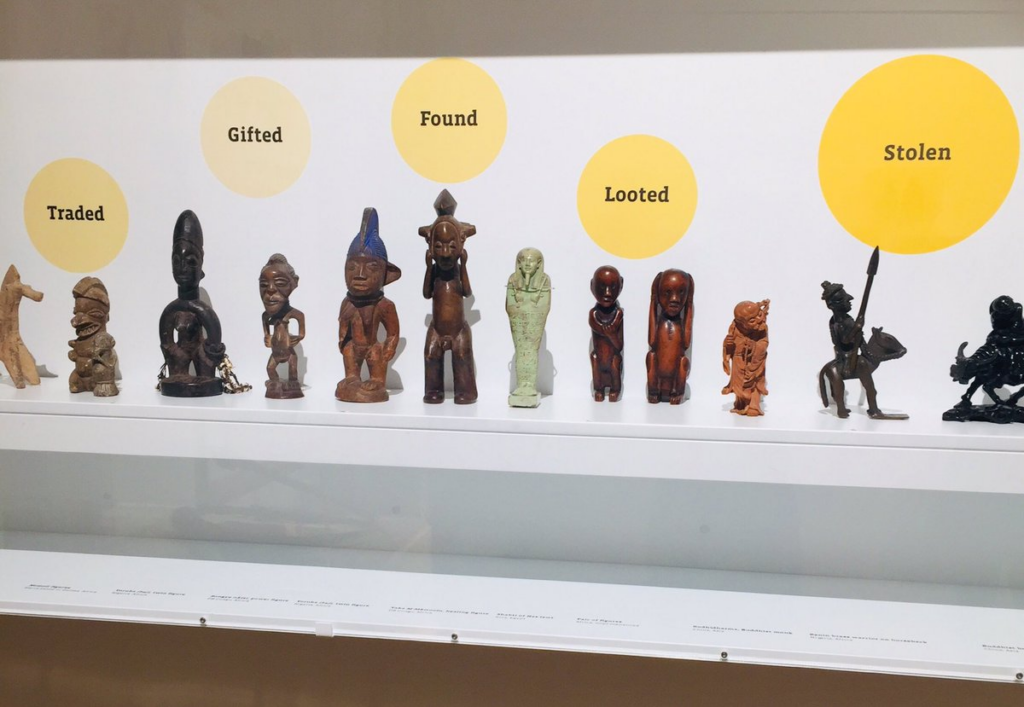It is important to remember how perceptions may have changed over time in creating new interpretation. Lets go back to our example of a piece of jewellery. If we imagine that it may have been acquired in the 19th century by a collector of European decent, this impacts the choices made on how the object was recorded. They would have had certain perceptions of the community and a westernised geographical view of the region that the object originated from that will come through in the information they gathered.
Museums can help to combat this by taking an honest approach to how objects may have been acquired and perceived in the past. It can take a lot of research to do this effectively and whilst museums should strive to undertake this work in the long term, there are ways to do this in the interim. Derby Museums have done this in an effective yet simple way in their new World Collection gallery space, Objects of Love, Hope and Fear. By acknowledging the many ways in which objects were historically acquired they are challenging the traditional museum dialogue.

Many museums are beginning to approach the colonial legacy of their collections in an open and honest way.
In recent years the debate around decolonisation has gained momentum in the museum sector. The Empowering Collections report called for more guidance in the sector to support museums in undertaking this work and the Museums Association Ethics Committee has recently commissioned work to develop this. It is vital that museums begin to start conversations about this, both within and outside of the sector.